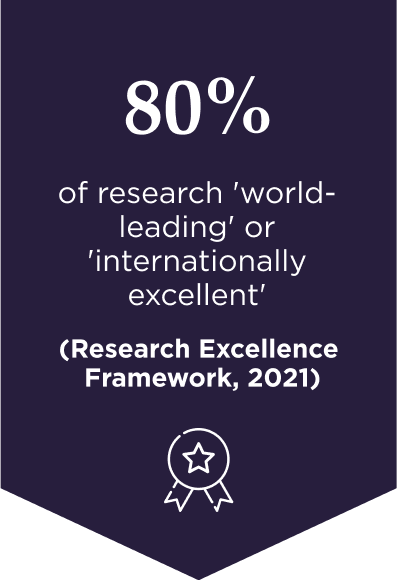Data mining for business intelligence
Posted on: September 16, 2021
Big data and data mining are invaluable commodities in this information age.
Statista estimate that the global big data analytics market will increase with a compound annual growth rate of almost 30% in coming years, with revenue reaching over $68billion by 2025.
Over the last two decades, use of data mining techniques has rapidly accelerated. With real-world application in almost every market and industry – from energy management and global healthcare monitoring, to finance and retail – businesses are adopting this technology to transform their raw data into actionable, useful information. Business intelligence tools – such as data warehouses, cloud data services, dashboards and data discovery – help organisations to track key metrics and streamline goals, providing solid, evidence-based insights to inform future decisions.
Data has the potential to vastly enhance the ways in which businesses operate, and it’s fuelling the industry-wide demand for data scientists and specialists.
What is data mining?
Data mining, also known as Knowledge Discovery in Databases (KDD), is the process of uncovering patterns and other valuable information from large data sets. Combining statistics, artificial intelligence and machine learning, it uses complex software to reveal trends and relationships between data – going far beyond standard analysis.
These automated systems process vast amounts of data in an otherwise-impossible amount of time. Data mining tools, such as SAS, can be used for two main applications: describing patterns in target datasets, and predicting likely outcomes through the use of deep learning and machine learning algorithms.
There are several common data mining techniques, which include:
- Classification Analysis
- Association Rule Learning
- Anomaly or Outlier Detection
- Clustering Analysis
- Regression Analysis
Why is data mining useful?
Most companies use database systems of some description – but do they make the most of their data more generally?
Data mining creates actionable information which is invaluable to businesses looking to monitor performance, refine their offerings, better understand consumers, identify new opportunities and much more. It’s this very information that helps with forecasting and guiding future decision making.
However, data mining cannot provide answers in isolation. In order to derive meaningful results, a business must ask the right questions – and know how to act on the outcomes. For example, if a business aims to improve the response rate of its emailing marketing campaigns, investigating the characteristics of individuals who have responded to previous campaigns could offer useful insight. It is the responsibility of leaders and relevant team members to understand the business, its data, and the analytical methods used. While data mining can unearth hidden information within data, it cannot determine the value of the information to a business.
The more data a business can collect from its consumers, the more value it can deliver to them.
How does data mining work?
Oracle outline the four phases of a data mining project as:
- Problem definition: This phase focuses on outlining the objectives and requirements of the project and what questions need to be asked. It should be closely aligned to the business need.
- Data gathering and preparation: In this phase, data collection and exploration determines whether the data is sufficient to address the business objective. As well as identifying any patterns within the data, it reveals any issues with data quality, and establishes whether data needs to be added or removed. These data preparation tasks are likely to be repeated multiple times, and can significantly improve overall data outcomes. Data insights will only be as useful as the data collected.
- Model building and evaluation: This phase involves selecting and applying modelling techniques – working to calibrated parameters – and may require further data transformation. The focus is to determine whether the data mining algorithm satisfies the original business objective.
- Knowledge deployment: In this phase, data mining is used within the target environment in order to derive actionable information and insights. It can involve scoring, extracting model details, or integrating data mining models within data warehouse infrastructure, applications, or query and reporting tools.
The data mining process is iterative, and the workflow may not necessarily progress in a linear fashion. Once the information has been gathered, data visualisation is an accessible, user-friendly way to communicate trends and insights.
How different companies use data mining
There are innumerable data mining applications in the business world. It’s widely used throughout sectors such as telecom, media, technology, insurance, education, manufacturing, banking and retail.
Here are three examples of how it’s used across different industries:
Market Basket Analysis (MBA) – also known as affinity analysis – is a technique used by large e-commerce retailers, such as Tesco and Amazon, to reveal associations between items. These retailers look for combinations of items that occur frequently in transactions, e.g. customers that buy bread are also likely to buy butter. Using MBA information, retailers can group co-occurring products together to increase cross-selling, drive online recommendations, and create targeted marketing campaigns based on customer preference. In this way, MBA insights aim to increase overall spend. Sequential pattern mining is also widely used to track customer behaviour and purchasing, and sales forecasting uses historical data of what a customer previously bought to predict what they might buy in future.
For businesses who rely on fraud detection – including digital banking, e-commerce, IT and compliance – data mining algorithms and predictive analytics are critical in detecting real-time anomalies (such as fraudulent credit card activity) and revealing patterns in transactions and behaviour. Artificial Neural Networks, which have the ability to process a multitude of inputs in complex, non-linear relationships, are integral to facial and handwriting recognition checks.
In the social media landscape, unstructured data across various platforms – such as profiles, likes, images, connections – is used to identify behavioural patterns and build detailed pictures of consumers. This in-depth understanding of what fuels online communities can inform digital marketing campaigns, brand management, market growth and more.
Advance your data science and data analysis skills
Interested in pursuing a career in computer science? Want to harness the power of data mining software? Could predictive models and other tools enhance your business?
Gain sought-after skills to excel in a high-demand field with Keele University’s online MSc Computer Science with Data Analytics programme. Designed to prepare you for a wide range of careers at the numerous companies who are investing in data analytics, you’ll develop a comprehensive understanding of data management and explore the foundations of artificial intelligence. You’ll also learn programming languages such as Python, R and Matlab.



